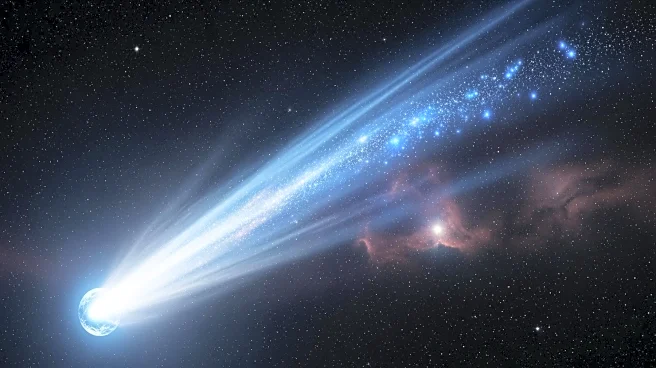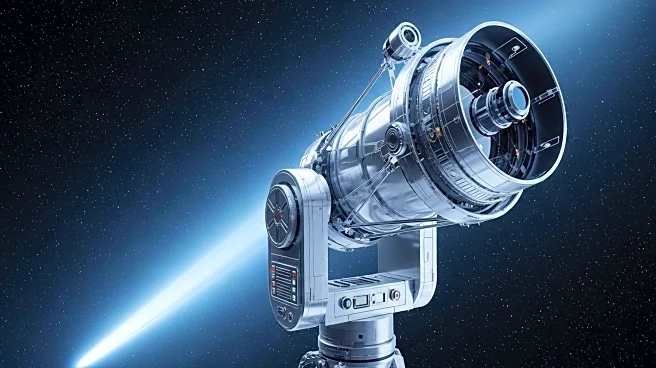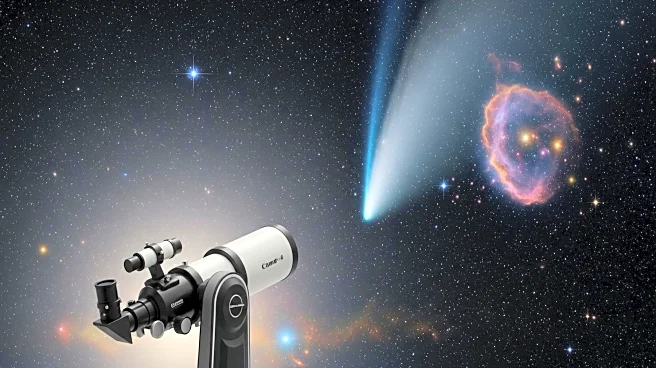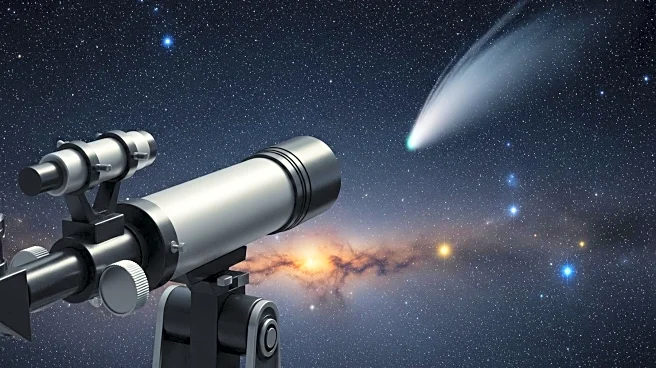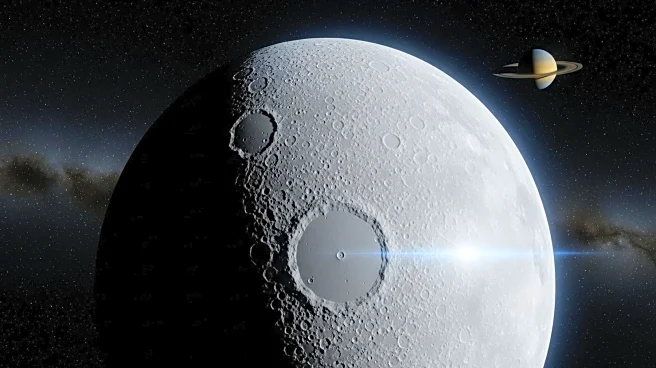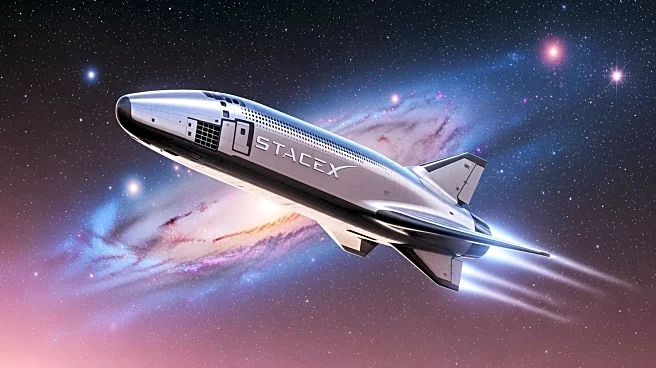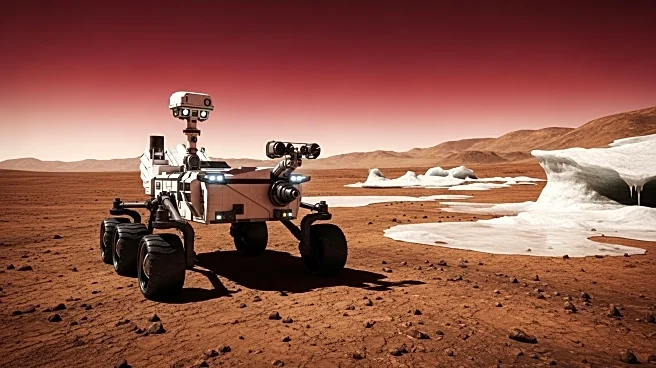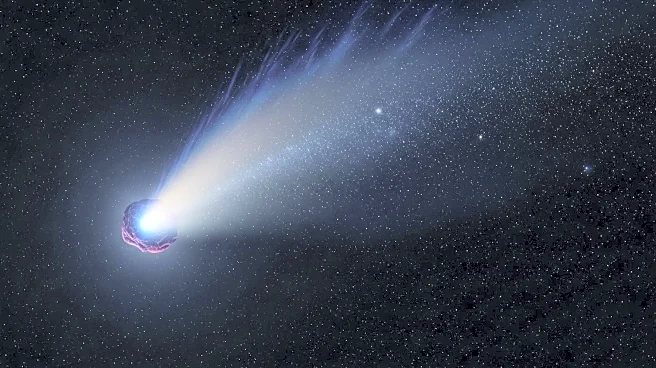What's Happening?
NASA researchers at Auburn University have discovered hydroxyl emissions from the interstellar comet 3I/ATLAS, indicating the presence of water on its surface. This finding was made using the Neil Gehrels
Swift Observatory, which is capable of detecting ultraviolet signatures that are blocked by Earth's atmosphere. The discovery is significant as it allows scientists to study the comet using the same methods applied to solar system comets, providing insights into the chemical processes of comets from other star systems. The comet is releasing water at a rate of 40 kilograms per second, even at a distance from the sun where sublimation is typically not expected.
Why It's Important?
The detection of water on 3I/ATLAS suggests that the chemical ingredients necessary for life may not be unique to our solar system. This discovery could have profound implications for understanding the formation of planets and comets around other stars. It challenges existing theories about cometary behavior and composition, as previous interstellar comets have shown different characteristics. The ability to study interstellar comets like 3I/ATLAS provides valuable data that could enhance our understanding of planetary systems beyond our own.
What's Next?
Researchers will continue to analyze the data collected from 3I/ATLAS to better understand its structure and composition. This could involve studying the comet's gaseous cloud and the processes that lead to its water emissions. Future observations may focus on identifying other interstellar comets and comparing their characteristics to those of 3I/ATLAS, potentially leading to new insights into the diversity of planetary systems.
Beyond the Headlines
The discovery of water emissions from 3I/ATLAS raises questions about the potential for life in other planetary systems. It suggests that the building blocks for life could be more widespread than previously thought, prompting further exploration into the origins of life and the conditions necessary for its development. This finding may also influence future space missions aimed at studying interstellar objects and their role in the cosmic ecosystem.
